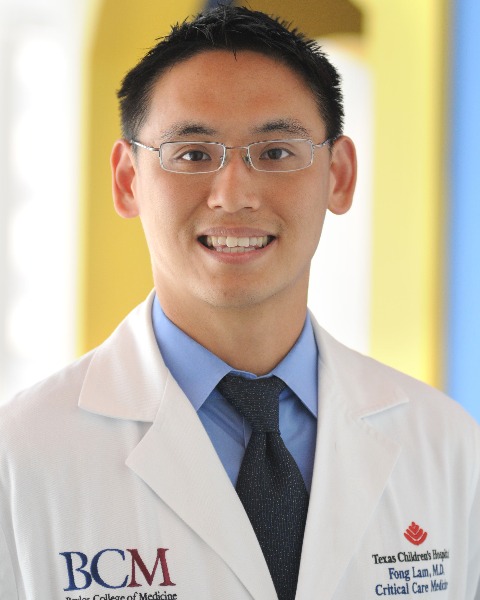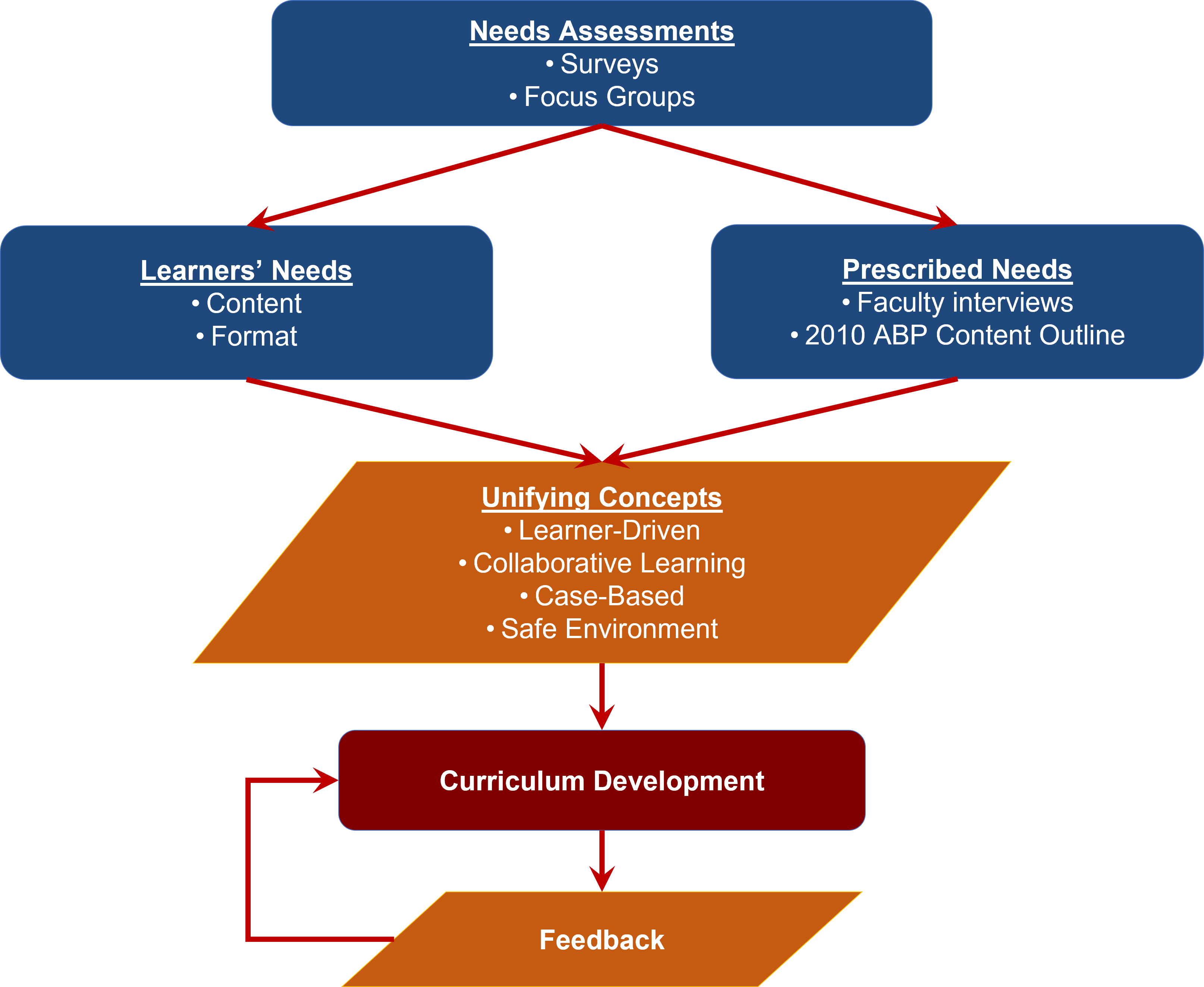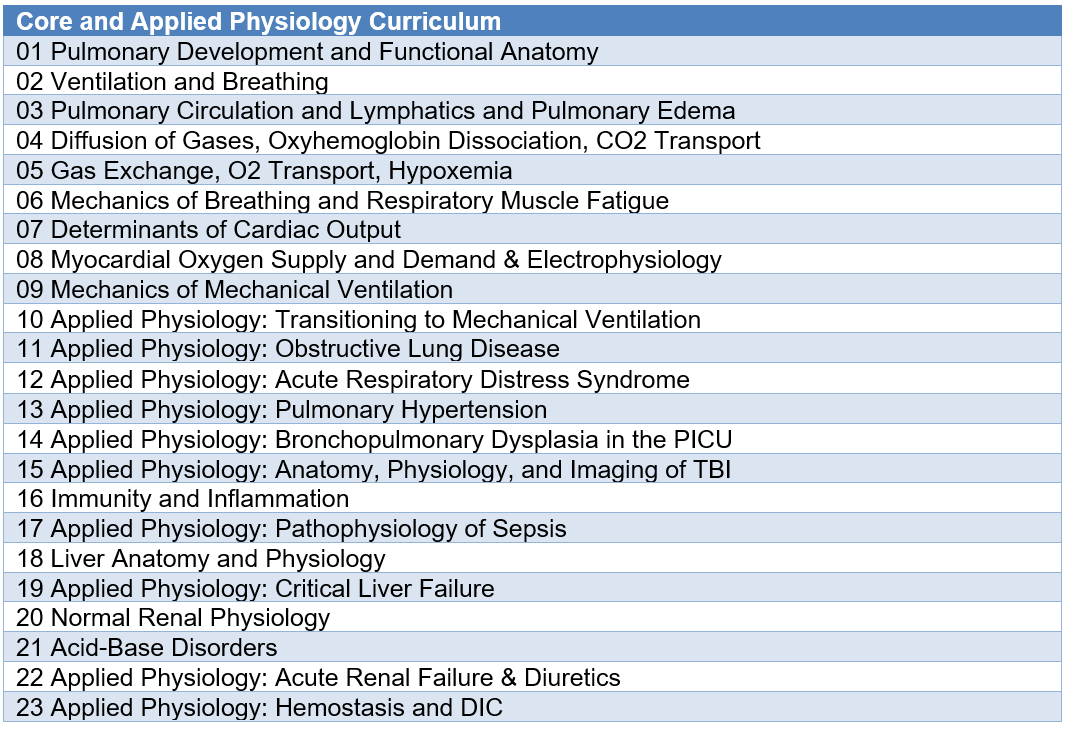Medical Education: Fellow
Category: Abstract Submission
Medical Education 8 - Medical Education: Fellow II
226 - Development of a novel pediatric critical care curriculum to foster meaningful engaged learning
Sunday, April 24, 2022
3:30 PM - 6:00 PM US MT
Poster Number: 226
Publication Number: 226.332
Publication Number: 226.332
Fong W. Lam, Baylor College of Medicine, Houston, TX, United States; Dalia A. Bashir, Texas Children's Hospital, houston, TX, United States; Nirica M. Borges, Baylor College of Medicine, Houston, TX, United States; Satid Thammasitboon, Baylor College of Medicine, HOUSTON, TX, United States

Fong W. Lam, MD (he/him/his)
Associate Professor of Pediatrics
Baylor College of Medicine
Houston, Texas, United States
Presenting Author(s)
Background: Pediatric Critical Care Medicine (PCCM) fellows must gain in-depth knowledge in fundamental physiologic concepts central to the mastery of a care for complex, critically ill patients. Given competing demands between clinical service and learning needs, an effective instructional approach is critical to equip fellows with knowledge and skills for expedient practice transfer. Previously, we implemented a faculty-driven, textbook discussion group to teach concepts, but it was viewed as intimidating and inefficient.
Objective: To respond to our learners’ needs, we developed a novel curriculum based on meaningful engaged learning aimed at increasing fellows’ satisfaction, acquisition, and application of basic physiologic concepts.
Design/Methods: We conducted needs assessments to identify learners’ and prescribed needs (Fig. 1) to inform the curricular content (Table 1) and instructional redesign. To promote meaningful engaged learning among PCCM fellows, we employed a flipped-classroom model: self-study guides and case-based questions for pre-session and learner-driven (moderation by senior fellows) in-class activities. Additionally, we fostered a safe environment with positive learner-faculty rapport and collaborative learning via small groups of mixed learner levels. We used questionnaires to evaluate learners’ satisfaction and knowledge acquisition at the end of each session and academic year. To evaluate educational effectiveness, we calculated individuals’ changes in subspecialty in-training exam (SITE) scores, comparing pre- (2010-2015) and post-implementation (2016-2021). Data were evaluated using Student’s t-test (mean ± SEM).
Results: From 53 survey respondents, fellows reported high satisfaction (4-point Likert scale, 4=best) with the small groups (3.6 ± 0.1), peer-teaching (3.6 ± 0.1), flipped-classroom (3.8 ± 0.1), safe learning environment (3.6 ± 0.2) and the interactive format (3.8 ± 0.1). They expressed an improvement of their knowledge in all 23 sessions (3.8 ± 0.0). Fellows who had experience with the old and new formats stated improvement in their learning experience (Table 2). Post-implementation data showed higher SITE scores among 3rd year fellows (68 ± 1.3% vs. 63 ± 2.2%, p< 0.05; n=33, 18; national mean=66%) and increased improvement between 1st and 3rd year scores (8.3 ± 1% vs. 4.3 ± 1%; p< 0.05; n=33, 18; national mean=5%).Conclusion(s): We created a new curriculum to foster meaningful engaged learning among fellows to address key barriers to physiology education. Our outcomes indicate that fellows attained knowledge content and reported high satisfaction in learning.
Figure 1: Curriculum development process.
Table 1: Content outline of the AY2021-2022 curriculum. Based on the faculty’s and fellows’ feedback, the content has been modified over the years to match the educational needs of the program.
Based on the faculty’s and fellows’ feedback, the content has been modified over the years to match the educational needs of the program.
Objective: To respond to our learners’ needs, we developed a novel curriculum based on meaningful engaged learning aimed at increasing fellows’ satisfaction, acquisition, and application of basic physiologic concepts.
Design/Methods: We conducted needs assessments to identify learners’ and prescribed needs (Fig. 1) to inform the curricular content (Table 1) and instructional redesign. To promote meaningful engaged learning among PCCM fellows, we employed a flipped-classroom model: self-study guides and case-based questions for pre-session and learner-driven (moderation by senior fellows) in-class activities. Additionally, we fostered a safe environment with positive learner-faculty rapport and collaborative learning via small groups of mixed learner levels. We used questionnaires to evaluate learners’ satisfaction and knowledge acquisition at the end of each session and academic year. To evaluate educational effectiveness, we calculated individuals’ changes in subspecialty in-training exam (SITE) scores, comparing pre- (2010-2015) and post-implementation (2016-2021). Data were evaluated using Student’s t-test (mean ± SEM).
Results: From 53 survey respondents, fellows reported high satisfaction (4-point Likert scale, 4=best) with the small groups (3.6 ± 0.1), peer-teaching (3.6 ± 0.1), flipped-classroom (3.8 ± 0.1), safe learning environment (3.6 ± 0.2) and the interactive format (3.8 ± 0.1). They expressed an improvement of their knowledge in all 23 sessions (3.8 ± 0.0). Fellows who had experience with the old and new formats stated improvement in their learning experience (Table 2). Post-implementation data showed higher SITE scores among 3rd year fellows (68 ± 1.3% vs. 63 ± 2.2%, p< 0.05; n=33, 18; national mean=66%) and increased improvement between 1st and 3rd year scores (8.3 ± 1% vs. 4.3 ± 1%; p< 0.05; n=33, 18; national mean=5%).Conclusion(s): We created a new curriculum to foster meaningful engaged learning among fellows to address key barriers to physiology education. Our outcomes indicate that fellows attained knowledge content and reported high satisfaction in learning.
Figure 1: Curriculum development process.

Table 1: Content outline of the AY2021-2022 curriculum.
 Based on the faculty’s and fellows’ feedback, the content has been modified over the years to match the educational needs of the program.
Based on the faculty’s and fellows’ feedback, the content has been modified over the years to match the educational needs of the program.